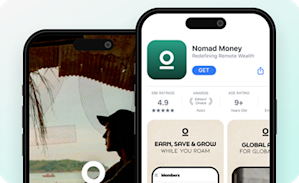Online Courses
Our Guide to Virtual Instructor-Led Training (VILT)
Virtual instructor-led training is a type of synchronous learning in which a teacher educates a learner remotely over the internet.
Author
Mighty Team
Last Updated
February 6, 2025

Table of Contents
Virtual instructor-led training is delivered online and makes learning accessible for people around the world. It’s used in all sorts of learning environments, but the term is most common in the corporate space for employee and customer training.
In this article, we’ll introduce you to the basics of virtual instructor-led training, including:
What is virtual instructor-led training (VILT)?
Benefits & examples of VILT.
Best practices for VILT.
If you want more support in building your online community, come join OUR Mighty Community for free and meet other new and established community owners! We’d love to meet you. Join for free!
What is virtual instructor-led training (VILT)?
Virtual instructor-led training (VILT) is a type of synchronous learning in which a teacher educates a learner remotely over the Internet. It’s a web-based training that mimics the typical dynamic of a traditional classroom, done live, with an instructor leading and students engaging over the virtual platform–often either by being present on video or asking questions in a chat.

Although virtual instructor-led training has many of the same features as the traditional classroom, it’s more scalable. Training can be delivered to thousands of students at a time in different locations–especially if it’s designed well. VILT is becoming common in higher education. Virtual instructor-led training in higher ed also allows colleges to decrease high facilities costs required to keep classrooms functioning, as they offer more courses online and through hybrid learning.
VILT is also booming in the corporate world, with 40% of Fortune 500 companies using it for both internal and customer-facing training. A company can easily hire a teacher for employee education and upskilling who can lead company-wide instruction on a virtual platform. This makes it cost-effective, since neither the instructor nor the learners have to travel for the training, and they can bring in experts from anywhere in the world to teach.

Instructor-led training can be a great choice for the individual creator too! Even at a smaller scale, VILT allows creators to reach their audience directly and teach what they know with all the benefits and engagement of live learning.
Benefits of virtual instructor-led training (VILT)
Flexibility: Like other forms of both synchronous and asynchronous e-learning, virtual instructor-led training has the advantage of being flexible for the students. Even if the training is live (a cohort course), it’s more flexible for the students than in-person training.
Cost-effectiveness: VILT can be done at scale without the overhead of in-person training for venue, travel, etc.
Upskilling: A typical firm wastes anywhere from $660,000-$2.6 million each year on turnover. Using VILT for upskilling can both increase employee satisfaction and improve skill sets, reducing this number.
Perfect for digital skills: Teaching digital skills through VILT can unlock enormous value. For example, one study found that upskilling workers with digital skills in the Asia Pacific generated an additional $4.7 trillion per year in GDP.
Access to expertise: VILT can provide access to expertise that used to be almost impossible to get in person. An employee in a regional branch could take a VILT with leaders from your company or industry. Or, industry experts could consult to offer their own corporate training courses on a VILT model.
Scalability: There’s no limit to VILT participation. It’s especially great for standardized training in large enterprises since it can be offered to thousands at once.
Consistency: Offering training on a VILT model also means consistency, since the same instructor could train thousands company-wide on the same concept.
Interactive: Unlike asynchronous learning which has problems around accountability and engagement, VILT can be really interactive if done well. It can also include digital tools to boost interactivity: small group conversations, polls and questions, and more.
Recorded: Although the focus of VILT is on live training, it’s also easy to create a recording for someone to watch at their leisure.
Data-driven insights: Using a virtual teaching platform means you can both actively collect data and get useful platform data about user behavior.
Tailored learning paths: Finally, VILT makes it possible to create highly tailored learning paths–especially in large organizations–giving employees exactly the training they need.

Companies that use VILT
IBM: IBM’s VILT approach to employee upskilling mixes clear learning paths with industry-recognized credentials and a strong community feel to the learning experience. IBM’s research into skills training found that it led to a $70,000 savings in business value and 10% productivity boost.
Microsoft: Microsoft runs its own employee learning platform, Viva Learning, and is often thinking big on employee training–so much so it created its own T.V. show to teach ethics: The Trust Code. Employees love it. Microsoft runs VILT for vendors and partners through this platform.
Cisco: Cisco’s WebEx software and hardware have revolutionized employee training–both in-house and outside. With smart rooms that automatically find and broadcast speakers, Cisco is at the cutting edge of VILT tech. This combines with asynchronous learning via Cisco U.
Oracle: Oracle uses VILT for both employee training and customer updates–with a running list of training here.
Amazon: Amazon uses virtual instructor-led training for both employee and public-facing training. One of the best examples is the AWS training platform that offers it.

Types of VILT
Webinars: Similar to a broadcast, webinars can be used for VILT.
Virtual Classrooms: Building a full classroom experience in virtual takes more work, but is totally possible with modern course platforms.
Online Workshops: Bringing interactivity and collaboration to a VILT can be magical–helping people engage better.
Blended Learning with Virtual Components: Blended learning mixes virtual and in-person learning and VILT fits well.
Virtual Labs: Virtual learning can also be much more engaging and interactive with tests and projects: for example, a coding lab.
Simulations and Role-Playing Exercises: These done virtually are a great way to practice skills virtually.
Interactive E-Learning Modules with Instructor Interaction: VILT can also be made up of pre-recorded courses or modules with an instructor leading relevant discussions, Q&As, etc.

Best Practices for VILT
Get the tech right: “Virtual” training has to start with tech–and your platform is make or break. Look for live teaching and livestreaming tools (obviously) but think more holistically about feedback, project collaborations, course structuring (an LMS), and discussions and community. You’ll also need to consider relevant questions. For example, does your course platform need a point of sale? Can your students watch on an app?
Pre-session communication: Communicate early and often with relevant information–especially with access point info and relevant course information.
Engagement strategies: A webinar or live stream can have value, but most students excel in a more engaging environment. You can build in projects, discussions, community, or even live components to the VILT.
Clear learning objectives: As with any learning, VILT should have clearly established learning objectives that the course material supports. These should also be communicated with students early.
Technical support: VILT requires tech, and tech requires support. Even where it's not your fault, when students have technical issues it can affect the learning experience of the entire classroom. Provide space to ensure that tech works, and if possible have a technical support person on standby.
Feedback: Always be sure to create room for feedback in a VILT session. There's a learning curve to teaching virtually, and feedback is valuable. You can also check valuable data on user interactions to see how long students are staying engaged for, or what they are spending time doing (if you are using a virtual learning platform).
Recording: Decide whether to offer a recording. There are both pros and cons to this. On the one hand, offering a recording can make the training accessible for those who missed it (or who want to refer to it again). On the other hand, people may be less likely to show up and engage for live sessions if they know a recording is available.
Breaks: Breaks are even more important in VILT, especially for webinar-style training. Consider building in more breaks than you would have in a live session–since sitting in front of a screen can be even more taxing.
Safety: Finally, create a safe learning environment for everyone. If your organization doesn’t already have them, you might consider establishing some rules and guidelines. And if you have a community or discussion forum, put some moderation into practice.
Conclusion
We have lots of fantastic instructors who are running Mighty Networks, using their gifts to teach everything from painting to business. If you’re looking for a place to host virtual instructor-led training, we’ve built a platform that’s perfect for it, with live streaming and communities built in.
Ready to start building your community?
Start a free 14-day trial to explore Mighty—no credit card required.
More like this
Join Mighty Community
Learn the principles of Community Design™ (and see them in action) alongside thousands of creators and entrepreneurs. It's free to join!

Online Courses
Creating a Course
Teaching a Course
Course Platforms
Selling a Course
Communities & Memberships
Community Platforms
Managing a Community
Building a Community
Growing a Community
Monetizing a Community
Content Creation
Creators & Entrepreneurs
Monetization
Content Creation
Starting a Business
Website Builders
Creating & Managing a Website
Events
Event Platforms
Hosting & Marketing Events
Branded Apps
Creating a Mobile App
Coaching Apps
Community Apps
Coaching
Mastermind Groups
Starting a Coaching Business
Coaching Platforms
Filter by Category
Online Courses
Communities & Memberships
Creators & Entrepreneurs
Events
Branded Apps
Coaching
Build a $1 Million Community
This free masterclass went viral—sign up to learn why.

























